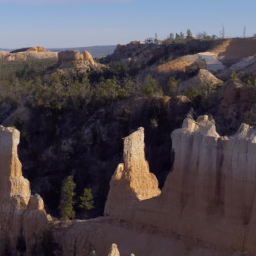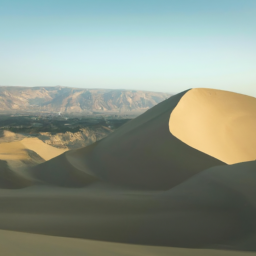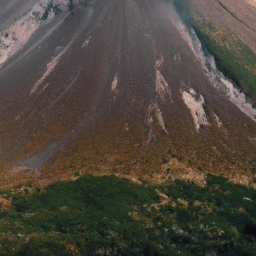“Explore the wonders of Bryce Canyon – a breathtaking landscape of natural beauty!”
Introduction
Bryce Canyon is a stunning natural wonder located in southwestern Utah. It is known for its unique and colorful rock formations, which are the result of millions of years of erosion. The canyon is filled with a variety of hoodoos, spires, and other geological features that make it a popular destination for hikers, photographers, and nature lovers. The area is also home to a variety of wildlife, including mule deer, elk, and bighorn sheep. Whether you’re looking for a peaceful hike or a thrilling adventure, Bryce Canyon has something for everyone.
Exploring Bryce Canyon: A Guide to the Best Hikes and Activities
Bryce Canyon National Park is a stunning natural wonder located in southwestern Utah. With its unique hoodoos, colorful rock formations, and breathtaking views, Bryce Canyon is a must-see destination for any outdoor enthusiast. Whether you’re looking for a leisurely stroll or an adventurous hike, this guide will provide you with the best hikes and activities to explore Bryce Canyon.
Hiking
Bryce Canyon offers a variety of trails for all skill levels. The most popular hike is the Rim Trail, which is a moderate 3-mile loop that takes you along the edge of the canyon. This trail offers stunning views of the hoodoos and the surrounding landscape. For a more challenging hike, try the Fairyland Loop Trail. This 8-mile loop takes you through a variety of terrain, including narrow canyons and lush meadows.
Camping
If you’re looking to extend your stay in Bryce Canyon, camping is a great option. The park offers two campgrounds: North Campground and Sunset Campground. Both campgrounds offer a variety of sites, including tent sites, RV sites, and group sites. All sites come with picnic tables, fire rings, and access to restrooms and showers.
Wildlife Viewing
Bryce Canyon is home to a variety of wildlife, including mule deer, elk, and bighorn sheep. The best time to view wildlife is early in the morning or late in the evening. Be sure to keep your distance and never approach or feed the animals.
Stargazing
Bryce Canyon is one of the best places in the world for stargazing. The park is located in a dark sky area, meaning there is minimal light pollution. On a clear night, you can see thousands of stars and even the Milky Way.
Whether you’re looking for a leisurely stroll or an adventurous hike, Bryce Canyon National Park has something for everyone. With its unique hoodoos, colorful rock formations, and breathtaking views, Bryce Canyon is a must-see destination for any outdoor enthusiast.
How to Photograph Bryce Canyon’s Unique Landscape

Bryce Canyon National Park is a stunning landscape of unique rock formations, hoodoos, and other geological features. Photographing this landscape can be a rewarding experience, but it requires some preparation and knowledge of the area. Here are some tips for capturing the beauty of Bryce Canyon in your photographs.
1. Plan your visit. The best time to photograph Bryce Canyon is during the early morning or late afternoon, when the light is softer and the shadows are longer. This is also the time when the park is less crowded, so you can take your time to find the perfect spot.
2. Choose the right equipment. A wide-angle lens is ideal for capturing the vastness of the canyon, while a telephoto lens can be used to capture details of the hoodoos and other formations. A tripod is also essential for capturing sharp images in low light.
3. Look for interesting compositions. Bryce Canyon is full of interesting shapes and textures, so look for interesting compositions that will make your photos stand out. Try to find unique angles and perspectives, and look for patterns and textures in the rocks.
4. Use the light to your advantage. The light in Bryce Canyon changes quickly, so be prepared to adjust your settings accordingly. Look for the best light and use it to your advantage to create dramatic images.
5. Experiment with different techniques. Try using long exposures to capture the movement of the clouds, or use HDR techniques to capture the full range of light in the canyon.
By following these tips, you can capture stunning photographs of Bryce Canyon’s unique landscape. With some preparation and experimentation, you can create beautiful images that will last a lifetime.
The History and Geology of Bryce Canyon National Park
Bryce Canyon National Park is a stunning natural wonder located in southwestern Utah. It is known for its unique geology, which has been shaped by millions of years of erosion. The park is home to a variety of geological features, including hoodoos, fins, and natural amphitheaters.
The history of Bryce Canyon National Park dates back millions of years. The area was first inhabited by Native Americans, who used the area for hunting and gathering. In the late 1800s, Mormon settlers began to explore the area and named it after Ebenezer Bryce, who was one of the first settlers in the area. In 1928, the area was designated as a national park.
The geology of Bryce Canyon National Park is unique and complex. The park is located in the Colorado Plateau, which is an area of high elevation and arid climate. The area is composed of sedimentary rocks, such as limestone, sandstone, and shale. Over millions of years, these rocks have been eroded by wind and water, creating the unique hoodoos and fins that are found in the park.
The hoodoos are tall, thin spires of rock that are formed when softer rocks are eroded away, leaving behind harder rocks. Fins are thin walls of rock that are formed when two different types of rock are eroded at different rates. The natural amphitheaters in the park are formed when the walls of a canyon are eroded away, leaving behind a large, open area.
Bryce Canyon National Park is a stunning natural wonder that has been shaped by millions of years of erosion. Its unique geology and history make it a popular destination for visitors from around the world.
Q&A
Q: What is the elevation of Bryce Canyon?
A: The elevation of Bryce Canyon is 8,000 to 9,000 feet above sea level.
Q: What is the best time of year to visit Bryce Canyon?
A: The best time of year to visit Bryce Canyon is from April to October. The summer months are the busiest, but the cooler temperatures in the spring and fall make for a more enjoyable experience.
Q: What type of wildlife can be found in Bryce Canyon?
A: Bryce Canyon is home to a variety of wildlife, including mule deer, elk, bighorn sheep, mountain lions, bobcats, coyotes, and many species of birds.
Conclusion
Bryce Canyon is a stunning natural wonder that is sure to leave a lasting impression on anyone who visits. Its unique rock formations, breathtaking views, and diverse wildlife make it a must-see destination for anyone looking to explore the great outdoors. Whether you’re looking for a peaceful hike or an adrenaline-filled adventure, Bryce Canyon has something for everyone. With its stunning beauty and endless possibilities, Bryce Canyon is a destination that will stay with you long after you leave.



